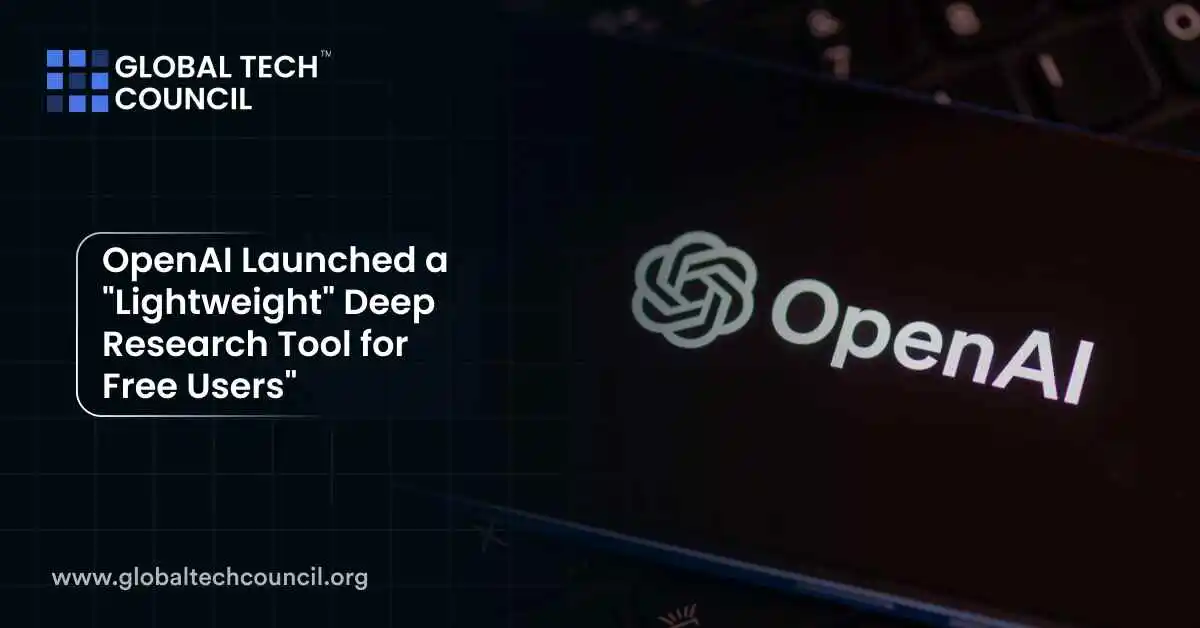 OpenAI has launched a new feature inside ChatGPT called the Lightweight Deep Research Tool. Now, even free users can ask ChatGPT to browse the web, gather information, and return detailed, cited research reports. This tool makes it easier for everyone to do serious research without spending hours searching and summarizing on their own. It is fast, reliable, and designed to make high-quality information accessible to all.
OpenAI has launched a new feature inside ChatGPT called the Lightweight Deep Research Tool. Now, even free users can ask ChatGPT to browse the web, gather information, and return detailed, cited research reports. This tool makes it easier for everyone to do serious research without spending hours searching and summarizing on their own. It is fast, reliable, and designed to make high-quality information accessible to all.
What Is the Lightweight Deep Research Tool?
The Lightweight Deep Research Tool is built into ChatGPT and lets users perform in-depth research tasks automatically. When you type a research question or topic, ChatGPT can now search the web, pull in data from trusted sources, and present a summarized, well-cited report.
It uses a special OpenAI model called o4-mini, which is lighter and faster but still accurate. The goal is to help users get deep, valuable insights with less waiting time and without needing a premium subscription.
Key Features
- Web Browsing: Searches live internet sources to find updated information.
- Summarization: Condenses large amounts of information into short, easy-to-understand summaries.
- Citations: Lists credible sources for every point made, helping users verify facts.
- Seamless Access: Integrated directly into ChatGPT for easy use without technical steps.
Why It Matters
Before this update, serious research using ChatGPT was mostly reserved for paid users. Free users had limited access to real-time browsing or deep reporting. This lightweight tool changes that by giving basic users access to strong research features.
It also means students, freelancers, small business owners, and everyday users can now save time and get better information without expensive software or subscriptions.
How to Use the Lightweight Deep Research Tool
Using the tool is simple and intuitive:
- Open ChatGPT (even with a free account).
- Enter a detailed research prompt like “Summarize the history of electric vehicles and future trends.”
- Choose the “Deep Research” mode.
- Wait for ChatGPT to search, summarize, and cite sources.
- Read the final report and explore citations if needed.
It usually takes just a minute or two, depending on the complexity of the topic.
Steps to Use OpenAI’s Lightweight Deep Research Tool
| Step | Description |
| 1. Open ChatGPT | Log into your free account |
| 2. Enter Research Prompt | Ask a detailed question or topic |
| 3. Select Deep Research | Engage the tool for web-based research |
| 4. Review Report | Read and check cited sources |
Who Can Access ChatGPT’s Lightweight Tool?
| User Type | Number of Research Tasks Allowed per Month |
| Free Users | 5 |
| Plus & Team Users | 25 |
| Pro Users | 250 |
OpenAI has placed a fair usage limit to maintain speed and reliability across users:
- Free users: 5 deep research tasks per month
- Plus and Team users: 25 deep research tasks per month
- Pro users: 250 deep research tasks per month
This ensures that even non-paying users can benefit, while heavy users can upgrade for more access if needed.
Who Should Use This Tool?
- Students writing essays or research papers.
- Freelancers creating content or doing market research.
- Small business owners researching trends or competitor analysis.
- Content creators looking for quick facts or background information.
If you rely on web research for your work or studies, this tool can save hours of effort and deliver better results.
Why Learning About AI Is Important
Tools like this are just a glimpse of how AI is reshaping education, research, and business. If you want to be future-ready, it’s a good idea to invest in building your AI and data skills.
You can start by exploring a professional Data Science Certification to learn how AI models like ChatGPT process data. If you want to dive even deeper into emerging technologies, consider getting a Deep Tech Certification. And if you want to use AI for business growth, marketing, or innovation, a Marketing and Business Certification could be a great next step.
Final Thoughts
OpenAI’s Lightweight Deep Research Tool marks a big step toward making AI research accessible to everyone. With fast browsing, clear summaries, and trusted citations, free users can now perform deep research without any technical hassle.
Whether you’re a student working on a project, a professional writing reports, or just someone curious to learn, this tool can save time, improve quality, and help you find trusted information easily.
The future of research is becoming smarter — and it’s free for anyone willing to explore it.